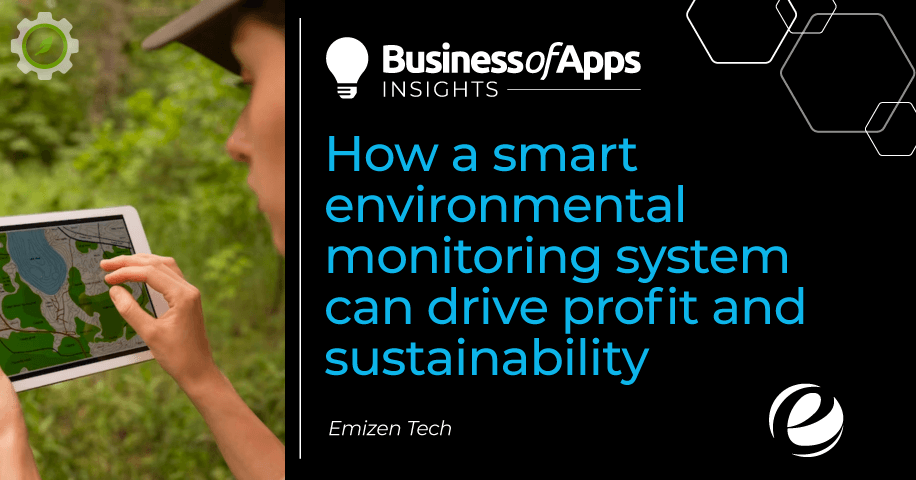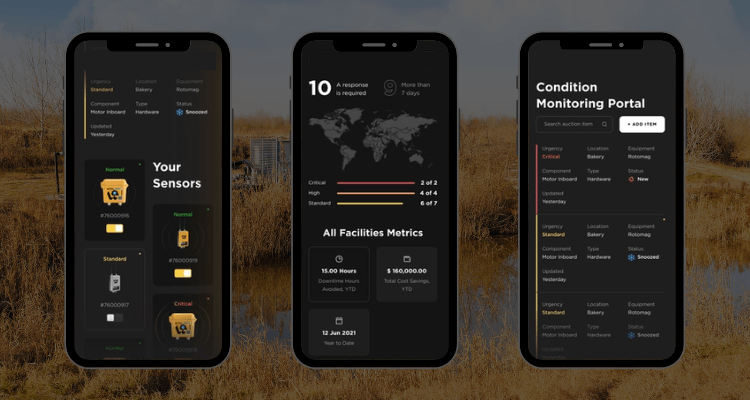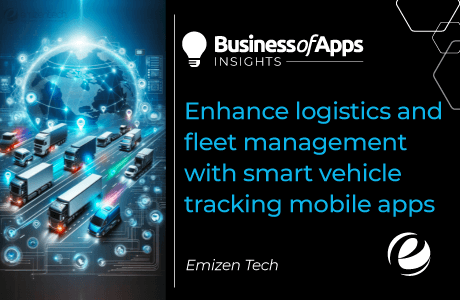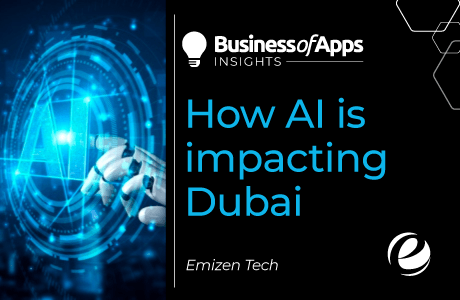
Today, when water pollution, air quality, and radiation pollution are the core environmental challenges, sound monitoring surfaces are needed. Maintaining a healthy society will let the world catch up with sustainable growth.
Lately, with modern sensor development and the Internet of Things (IoT) advancement, environment monitoring is experiencing enhancement and taking the face of smart environmental monitoring (SEM) systems. In 2021, the global environmental monitoring market was valued at $14.5 billion and is expected to reach around $17.9 by 2026 at a CAGR of 4.5%. SEMs successfully target various industries, like smart cities, pharmaceuticals, smart homes and offices, environmental protection, etc.
More facts about this system magnetize more returns and sustainability in countless means. How? Let’s go through this post to learn precisely about smart environmental monitoring (SEM) systems, benefits, challenges, and a lot more.
What is a Smart Environmental Monitoring (SEM) system?
SEM system
Source: EmizenTech
Smart Environmental Monitoring and Control apps monitor and control the industrial processes and environmental events that may adversely impact the environment, such as toxic waste and natural disasters. Besides, such solutions measure human activities that impact the environment, like population growth.
On this globe, in natural terms, environmental monitoring systems target soil, air, and water, monitor pollution, and meteorological and topographical data that leads to air pollutants analysis.
In urban communities, IoT-powered environmental monitoring systems perform data tracking and analysis, for instance, population demographics, traffic volumes, security, city infrastructure, resource scarcity, and more.
Ahead, in smart environments, the collected sensor data is uploaded to the cloud databases and other data lakes, where it’s monitored and analyzed and can also be used to build self-learning and intelligent apps.
Chief support of SEM systems
Smart environments include physical and non-physical elements, like IoT devices, sensors and actuators, machine learning models, and more. Let’s discuss a few below:
IoT devices
The device holding the caliber to connect, using a wired connection or wirelessly to the internet, is IoT. Usually, such devices are wireless, but not every time. These integrate with advanced technology that backs network connections with functional software, such as APIs, sensors, and actuators. Using such devices, you can automatically transfer the details between people, objects, and software with no human intervention.
Device Software
IoT operating systems comprise various IoT devices, allowing them to connect to IoT device management applications.
Sensors and actuators
In smart hubs, data comes from multiple sources, like software apps, sensors, and actuators.
Environmental monitoring apps get the input data from proximity, water and air quality, smoke, temperature, and gas. A physical device, known as a sensor, converts physical events or traits. For example, a light switch or motion detector.
One more physical device, an actuator, transfers electrical signals into the physical events. For example, a valve or switch that converts electrical signals into physical events into air conditioning.
Closed-circuit television (CCTV)
In smart environments, the latest technologies are also transparent to non-technical users. CCTV helps in enabling this transparency. Here, specific video surveillance software can be integrated into smart environment systems to offer functionality like face tracking, motion detection, and data storage.
Wireless sensor network (WSN)
This technology is usually used in IoT systems. In a wireless sensor network (WSN), an extensive collection of sensors helps gather and send data via a router to the internet in an IoT system, like a smart environment. This network may include wired devices, but a WSN might not incorporate wired devices.
For example, a wireless sensor network that monitors the rainfall in a specific area may or may not be connected to a smart environment network.
Benefits of SEM systems
Real-time alerts
Such solutions provide instant alerts to the users easing them to make immediate and sound decisions, leading to better and improved business outcomes meeting the desired goals.
Improved resource management
By monitoring varied parameters, such as water usage, energy consumption, or water generation, communities, and organizations can find room for improvement with SEM systems. This leads to conservation measures promotion and sustainable resource usage.
Apps
In smart environments, such apps monitor pollution, traffic, energy and water usage, infrastructure, and crime. This improves the caliber of such environments converting raw data into meaningful insights, automated alerts, and actions.
Environment effect assessment
With SEMs, you can get detailed data on varied factors impacting the environment. Ahead, using that data, you can evaluate the potential impact of project development, industrial activities, and other actions. This ensures reduced negative impacts and improved sustainable practices.
Remote monitoring and control
The remote sensing technologies, data transmission caliber, and IoT that SEM systems include facilitate remote monitoring and control of environmental situations from a central hub. There’s no need for physical presence, which diminishes the operational costs.
Compliance monitoring
Key environment parameters’ monitoring becomes easier with SEMs that check their compliance with environmental regulations and standards. So, by consistently monitoring pollutant levels, emissions, or noise levels, such systems can inform relevant stakeholders or authorities if non-compliance gets caught. Further, they enable routine corrective measures.
Data-driven research and planning
The data accumulated by SEM systems assist in scientific research, urban planning, and policy development. Researchers can use this data to learn environmental patterns, know trends, and build predictive models. On the other edge, the planners reap the benefits of the accumulated data in designing more sustainable infrastructure and cities.
Early alert and risk assessment
The SEM is best at collecting and analyzing data in real-time, facilitating easy identification of potential environmental hazards and risks in the early stages. This way, the environmental planners and relevant authorities find ways to prevent environmental damage and take proactive measures to diminish any adverse impacts.
Public awareness and engagement
You can boost public awareness of environmental issues by considering SEM usage for data accumulation and understanding. These systems with user-friendly interfaces, reports, and visualizations educate and engage people allowing them to follow environmentally conscious options.
Challenges of SEM systems
Lack of experience and guidance
Studies state that most organizations that have integrated SEMs into their solutions find it challenging to analyze the accumulated data and use it to make better business decisions. The reason behind this is the lack of proper guidance and expertise in IoT usage.
Outpaced technology emergence
With time, as IoT is cropping up uncontrollably, governmental regulations lag, catching up with the pace. This leads to inadequate control over the regulation of environmental standards.
Server-side blockage risk
To authorize, authenticate, and connect with various nodes, IoT networks depend on a centralized client-server paradigm. With the increasing number of nodes, the risk of server-side blockage increases.
Machine learning algorithm flaws
Such flaws in ML create false negatives or positives that extend the manual work in mission-critical systems.
To process unstructured data
IoT helps generate and use structured and unstructured data. Legacy systems lack the power that IoT systems should hold.
Final note
The complexity of smart systems lays an additional burden on organizations, according to which they need to monitor databases, performance, apps, hardware, and cloud services.
Here, a platform holding intelligence, Smart Environmental Monitoring, offers valuable insights into varied areas of smart world networks along with automated alerts and notifications. This helps businesses in making sound decisions for the seamless accomplishment of goals.
So far, SEM users may encounter the challenges mentioned above, but constant improvement and the adoption of advanced trends and techniques will help overcome these and drive enhanced sustainability and returns.
Devising to develop a Smart Environment Monitoring System? Connect with an experienced app development company holding proficiency and a trusted track record of guiding projects toward success.











